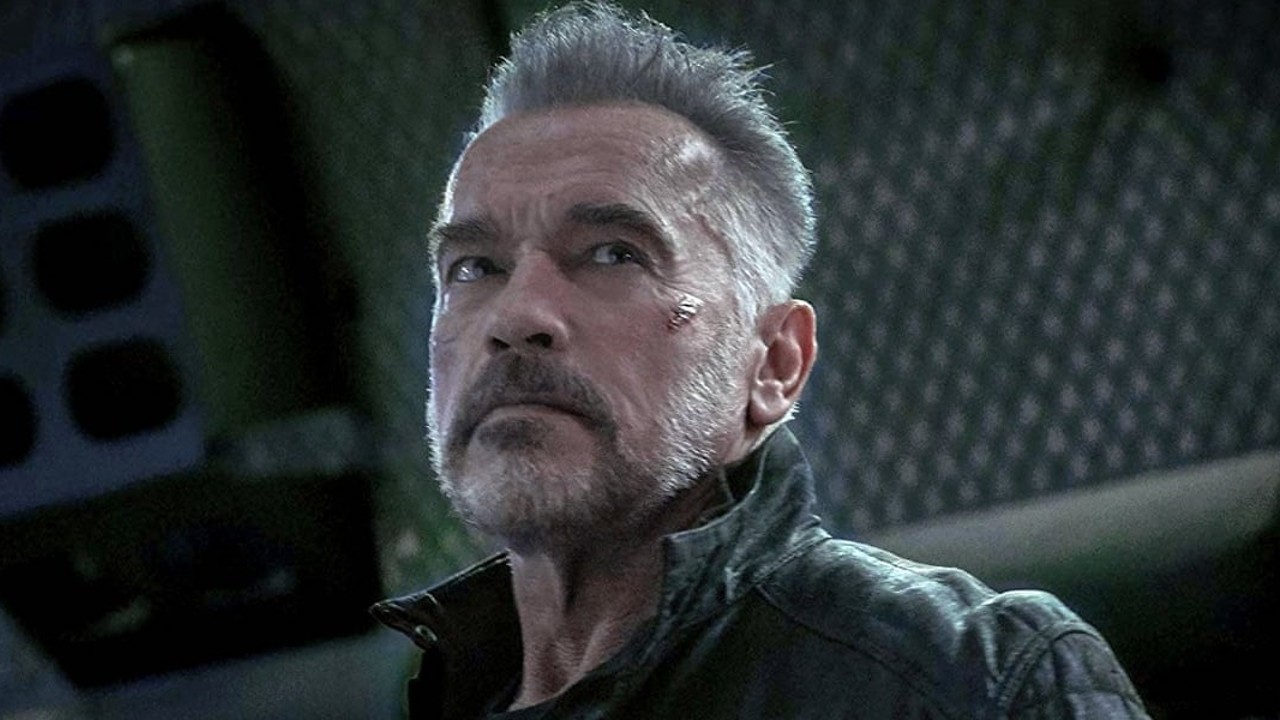No Sudden Move Ending Explained: What Is Everyone Really Chasing After In The Crime Thriller?
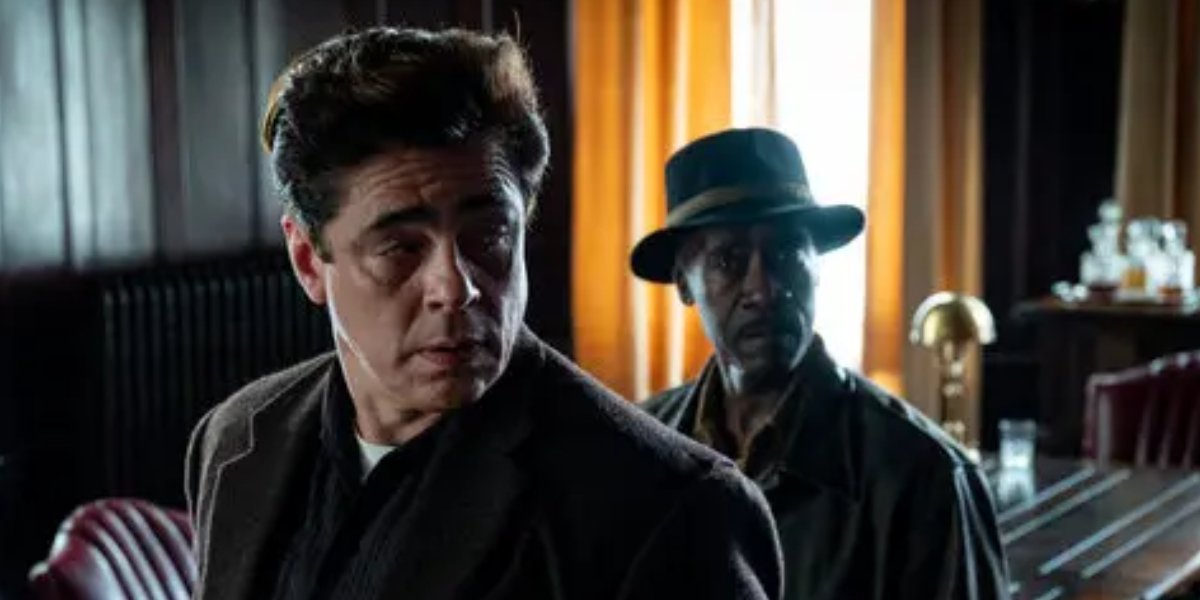
CinemaBlend participates in affiliate programs with various companies. We may earn a commission when you click on or make purchases via links.
WARNING: The following article contains spoilers to the entire story of No Sudden Move. We recommend you stream the movie on HBO Max before you make any further moves yourself.
You rarely see a film noir quite as smooth, stylish, and sensationally well-crafted these days like No Sudden Move - a star-studded crime drama now streaming exclusively on HBO Max. As the work of director Steven Soderbergh tends to be, the movie - focusing mainly on a pair of small-time crooks (Don Cheadle and Benicio Del Toro) teaming up to figure out who set them up for a job gone south in 1954 Detroit - is as thoroughly entertaining and visually entrancing as it is persistently demanding of your undivided attention. In case the No Sudden Move ending had you feeling like the mystery was left unsolved, let’s close the case with a thorough investigation of what went down.
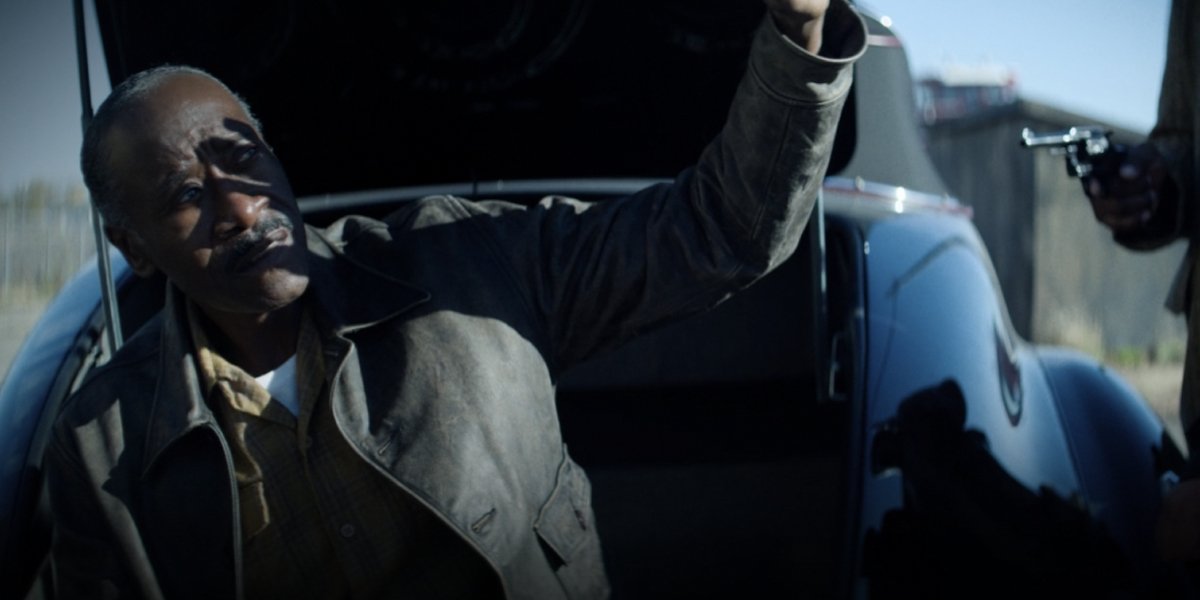
What Happens At The End Of No Sudden Move
Curt Goynes (Don Cheadle) meets Ronald Russo (Benicio Del Toro) when they, along with a third man named Charley (Kieran Culkin), are hired by Doug Jones (Doom Patrol’s Brendan Fraser) for what he promises is a simple, harmless job to force accountant Matt Wertz (David Harbour - Hopper from the Stranger Things cast) to obtain for them a document in a vault belonging to his boss, Mel Forbert (Hugh Magure). Charley accompanies Wertz to the office while Goynes and Russo hold his wife, Mary (Amy Seimetz); son, Matthew Jr. (Noah Jupe of A Quiet Place fame); and daughter, Peggy (Lucy Holt), hostage in their home. Wertz discovers that the vault is empty and decides to give to Jones some other handful of papers as a ringer.
Upon returning to the house, Charley leaves his mask off, which leads Wertz to suspect he and his family really are in danger because why else would a criminal show his face to a hostage he intended to let live? Before Charley can pull the trigger, Goynes pulls his, having realized they were set up, and instructs Wertz to claim that he shot Charley in defense, and not to mention his and Russo’s involvement when the authorities inevitably show up. Goynes and Russo then become unlikely allies to identify who is really calling the shots and topping their suspect list are Frank Capelli (Ray Liotta, a mobster movie veteran since starring in Goodfellas) and Aldrick Watkins (Bill Duke) - rival crime bosses with whom both Goynes and Russo have some not-so-pleasant histories.
First, to make sure this playing field is level, the duo grabs Matt Wertz and take him to Mel Forbert’s house to find the real document - the true value of which I will get into soon, but let’s keep this train rolling for now. Goynes and Russo have Frank Capelli meet them at a restaurant to make a deal for the document, which spirals out of control once Jones comes to the table with an itchy trigger finger. After Jones dies in the commotion, Capelli finally reveals he was hired to nab the document by a man named Hugh Naismith (Kevin Scollin), who agrees to meet Goynes and Russo at the Gotham Hotel to buy it for $125,000.
However, they first decide to get the sticky on Mel Forbert’s involvement and learn he wanted to sell the document to Mike Lowen - played by the DeNiro to Steven Soderbergh’s Scorsese, Matt Damon in a pleasantly surprising, uncredited cameo. This guy is a heavy hitter in his chosen field (another detail I will touch on later) who understands the value of this document wishes to keep it a secret. He buys it from Goynes and Russo at the Gotham Hotel for $375,000 at the same time Naismith flees the scene after, essentially, being robbed by Aldrick Watkins, whom Russo soon learns Goynes colluding with, only to be turned on the crime boss himself.
Your Daily Blend of Entertainment News
Russo takes the money and runs to share with his lover, Vanessa (Julia Fox from the Uncut Gems cast), who - in, arguably, the film’s most dazzling twist - shoots him dead so she can have the money all to herself, until it is abruptly swiped from her when she is pulled over by a cop who somehow knows her by name. That is because the cop was sent by Officer Joe Finney (Jon Hamm, no stranger to period pieces since leading the Mad Men cast) - the gumshoe investigating the Wertz Family’s hostage situation who is actually crooked and reports to Mike Lowen, to whom Finney promptly delivers the loot.
Meanwhile, Wertz reunites with his family who had been staying at a neighbors’ house since the incident, but is destined to continue being haunted by the consequences of his actions (another detail I will elaborate on soon). Probably the one other character granted a “happy” ending is Goynes, who is mercifully spared by Watkins and able to walk away with the $5,000 promised to him at the very beginning.
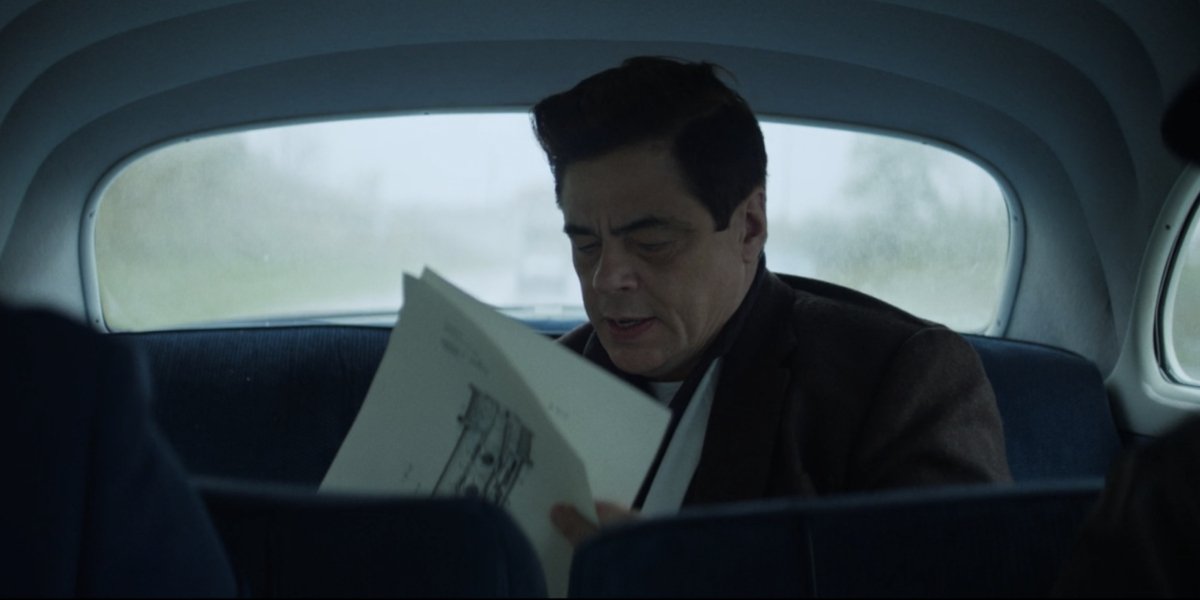
The MacGuffin Of No Sudden Move Has Some Historical Significance
While No Sudden Move, written by co-creator of the Bill and Ted movies Ed Solomon, is a good, old-fashioned work of crime fiction, it is based in truth in ways you might not have ever expected. The document that creates all this commotion is actually the design for a catalytic converter, which is a device that reduces the emission of toxic pollutants from a car’s exhaust system.
This may seem like a pretty mundane choice for such a problematic MacGuffin, but not so much in the Motor City during the 1950s. And I bet you might have thought the setting was only chosen to invoke that classic crime fiction feeling. Not quite.
In fact, as an afterword sprawled across the final shot of the film reveals, this device would be revolutionary to the automotive industry and to environmental safety, which is why the United States Environmental Protection Agency made it a requirement on all American motor vehicles in 1975. However, before then, an anti-trust case was made in 1969 against major car companies like GM and Ford by the Department of Justice for colluding to keep the development of this pollution-reducing technology secret for personal gain. The story of No Sudden Move takes major inspiration from the historically shady activity that took place over this device and incorporates it into a narrative that borrows from a classic theme of film noir: forbidden love.
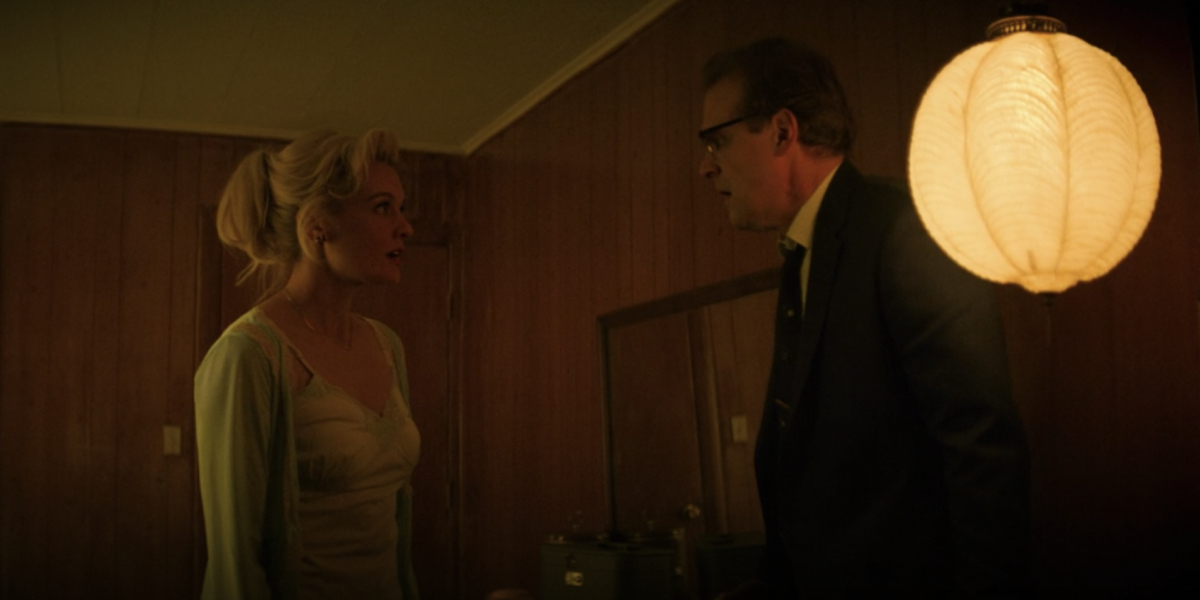
At Most, No Sudden Move Is A Story About Crimes Of Passion
Outside of the coveted catalytic converter and Curt Goynes’ aspirations to go to Kansas City, almost every character is motivated by lust - the most integral example being Matt Wertz. When Goynes, Ronald Russo, and Charley first enter the Wertz’s home hiding behind masks straight out of a 1960s Batman episode, the accountant claims that Mel Forbert is out of the office and he does not have access to his vault. Charley, however, insists that he does, knowing the family man is sleeping with Forbert’s secretary, Paula Cole (Frankie Shaw).
We eventually discover that the affair is what really set the events of No Sudden Move into motion. Wertz first came across the catalytic converter design and hoped to sell the information to Hugh Naismith, a car company rep, so he and Paula could run away happily together. However, as a conversation between him and Cole reveals, Wertz “chickened out,” which was a a turn-off for Cole, an opportunity for Forbert to sell the document to Mike Lowen, and a reason for Naismith to enlist the help of Frank Capelli, who then reached out to Doug Jones to hire Goynes and Russo.
Speaking of Russo, his connection to Capelli is more than just professional as his lover Vanessa is the wife of the crime boss, who leaves evidence of his angry reaction to being cuckolded all over her face. However, the lady gets her revenge by putting a bullet in her husband’s head and taking every last dime he has, which she adds to the loot Russo acquires from Lowen. It adds up to more than enough for them to run away happily together until Vanessa’s aforementioned bloody betrayal, which amounts to nothin when the money goes right back into the hands of Lowen. Come to think of it, this twist could signify No Sudden Move’s most important theme.
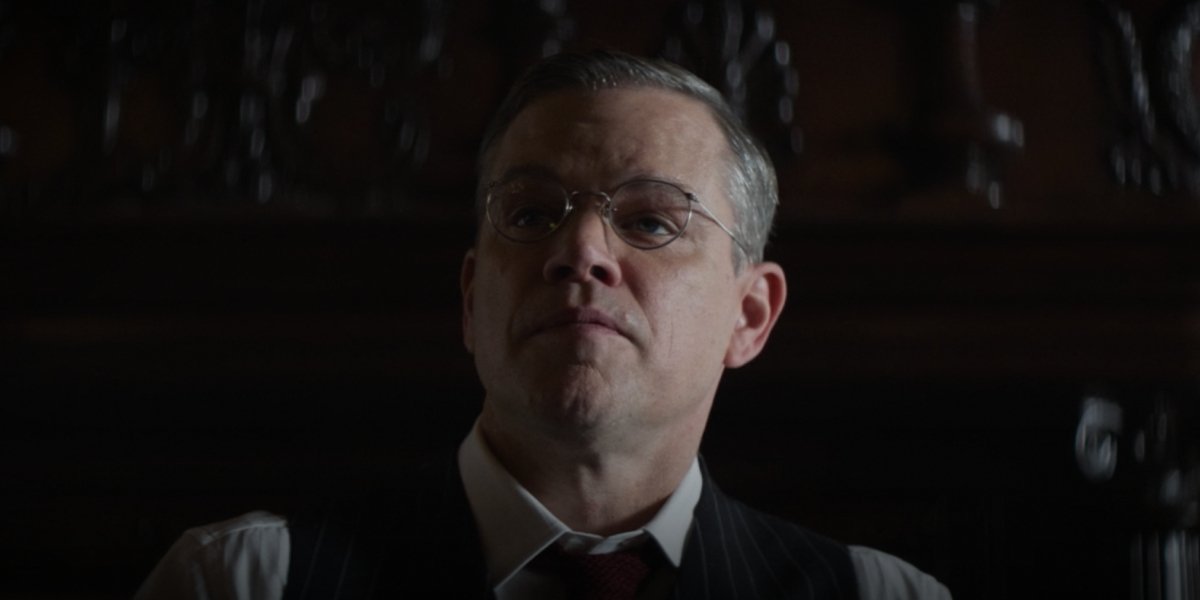
No Sudden Move Is Also A Parable About The Inevitable Victory Of “The Big Guys”
It is hard to find anyone in the No Sudden Move cast who could be called a “good guy,” but I believe the film wants us to think of Matt Damon’s character as the central antagonist. Mike Lowen is first and foremost, a businessman, but his primary goal is to keep the catalytic converter design a secret for the benefit of the car companies that he represents. Thus, he buys the design from Curt Goynes and and Ronald Russo for money that he gets back literally within hours later due to a series of double-crosses and some help from crooked Joe Finney.
What is especially fascinating is the movie practically gives this away when Lowen compares money to a lizard’s tail (“Cut it off, the damn thing just grows back”). The conclusion proves that this is not an exaggeration for him, despite the fact that it was achieved through despicable means. This is a man who is no better than any of the other crooked characters in the story, but still comes out on top effortlessly, bringing to the surface the film’s thought-provoking, underlying message: people powerful enough to be the ones who make the rules, no matter where on the moral spectrum they lean, will always win.
Indeed, No Sudden Move is another case of Stephen Soderbergh entertaining his unmatched directing style from a first-rate screenplay that calls back to the golden age of noire. What it does as a socially relevant, historical satire is another achievement entirely.

Jason Wiese writes feature stories for CinemaBlend. His occupation results from years dreaming of a filmmaking career, settling on a "professional film fan" career, studying journalism at Lindenwood University in St. Charles, MO (where he served as Culture Editor for its student-run print and online publications), and a brief stint of reviewing movies for fun. He would later continue that side-hustle of film criticism on TikTok (@wiesewisdom), where he posts videos on a semi-weekly basis. Look for his name in almost any article about Batman.

